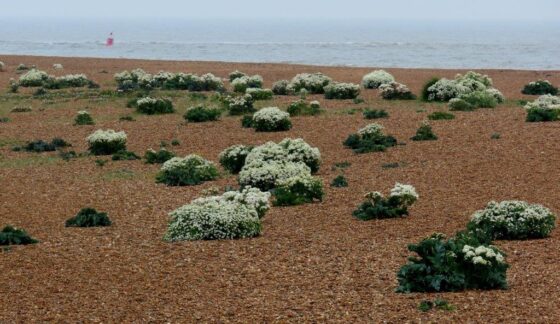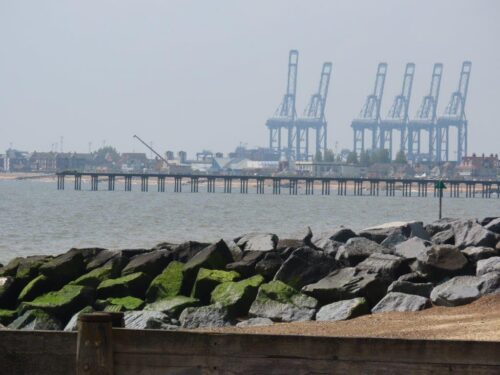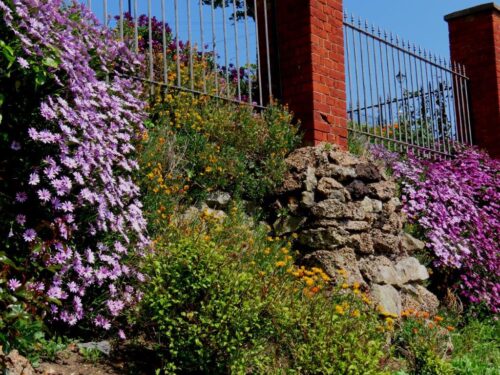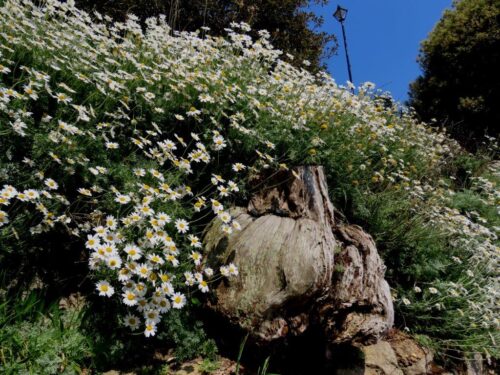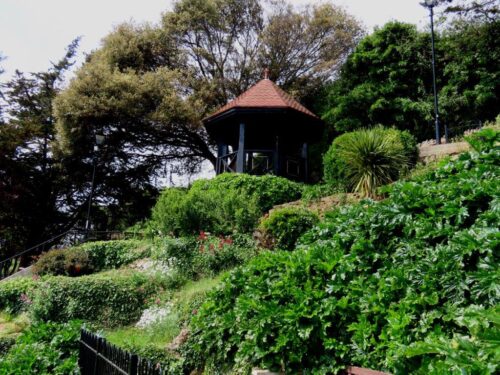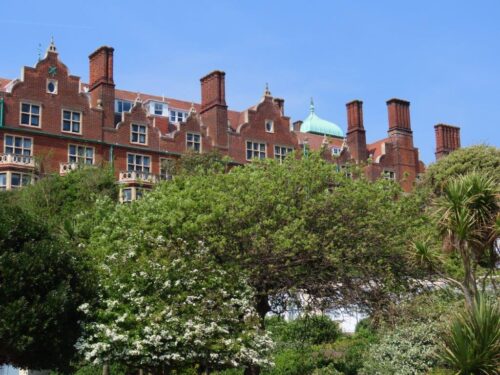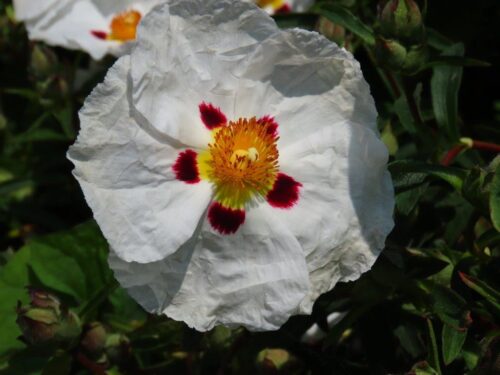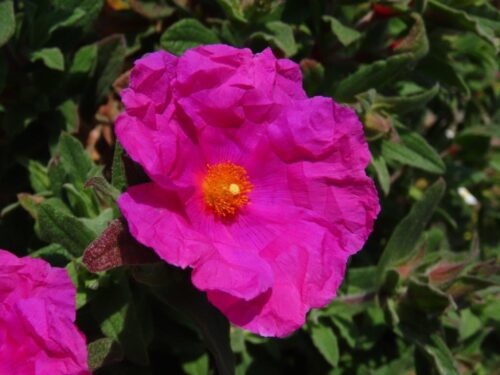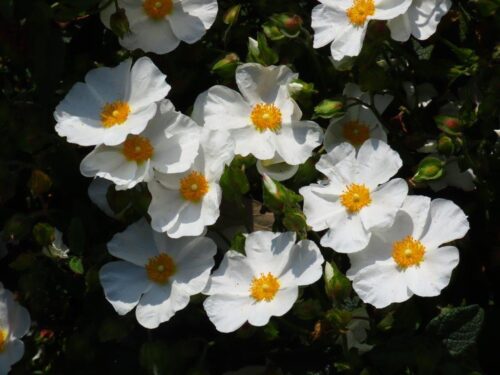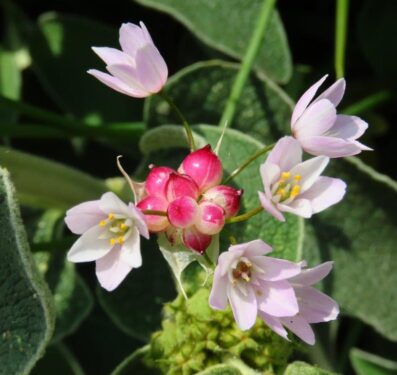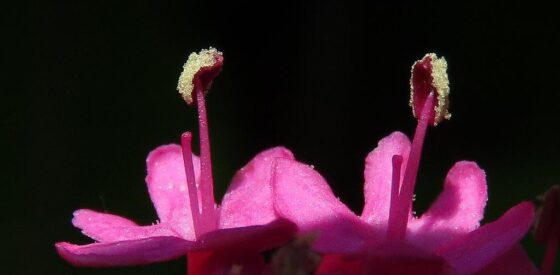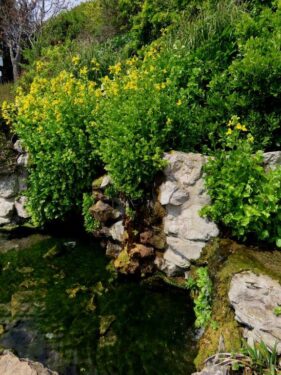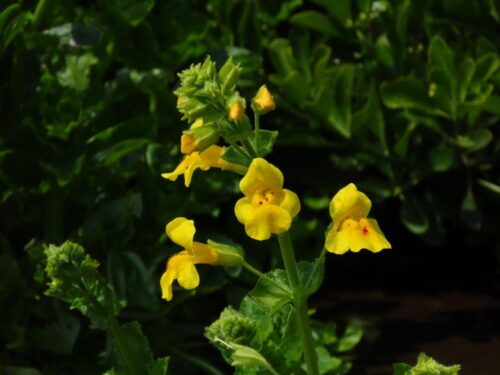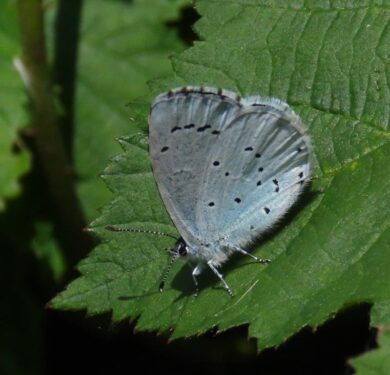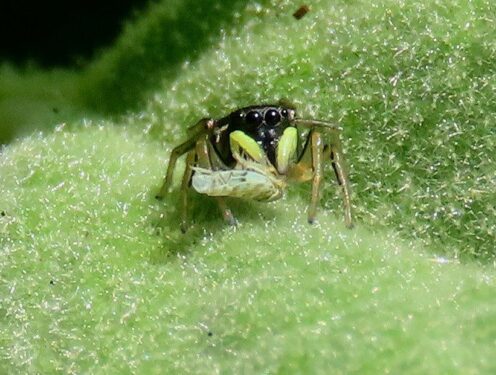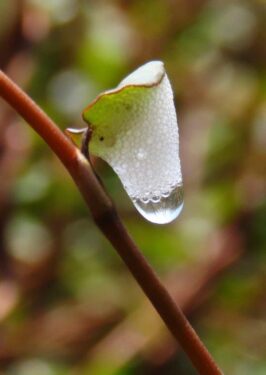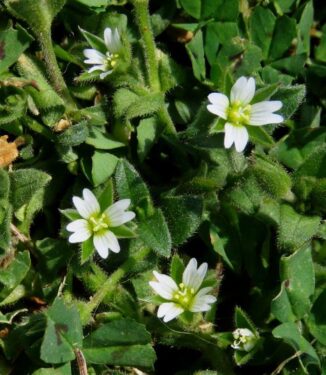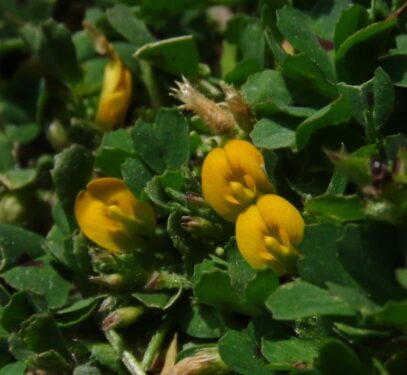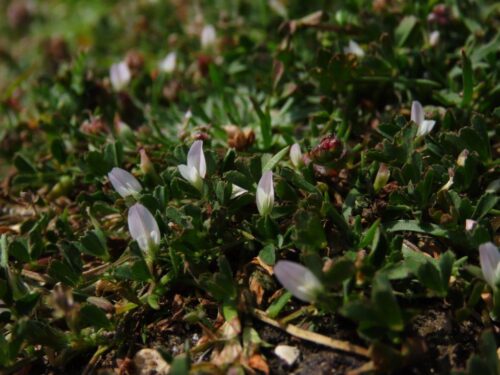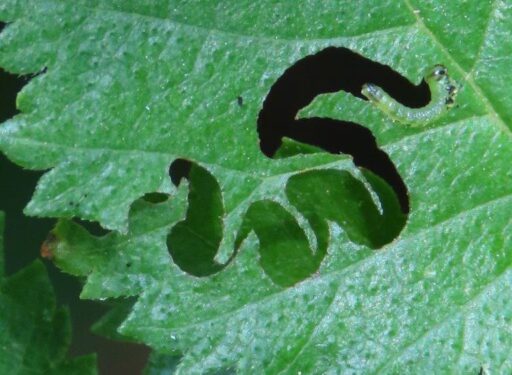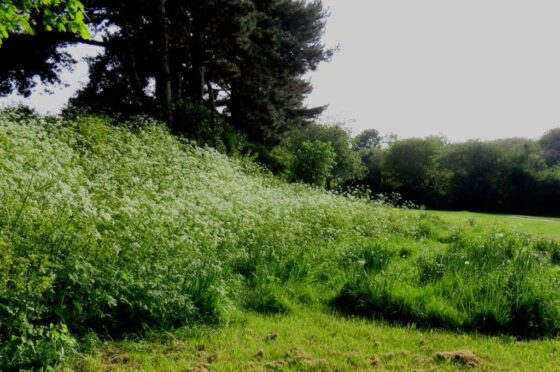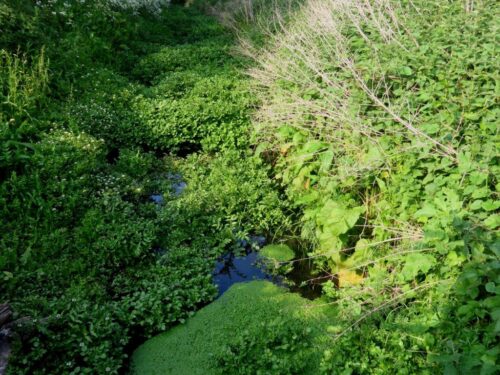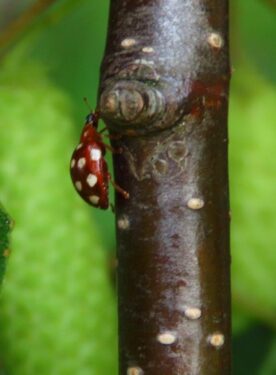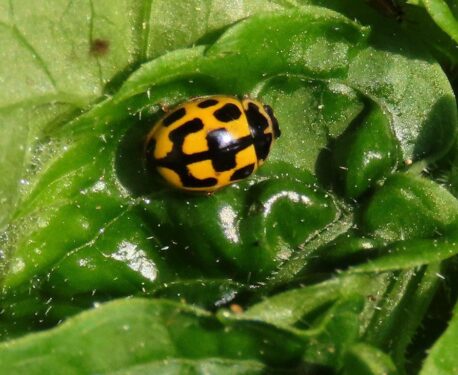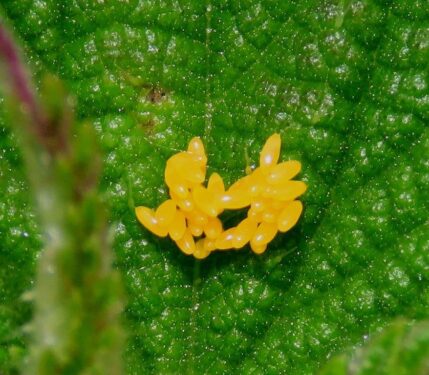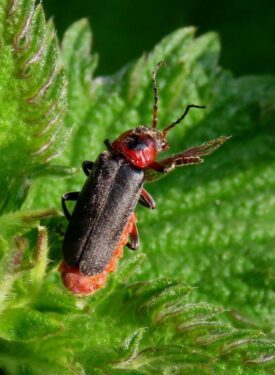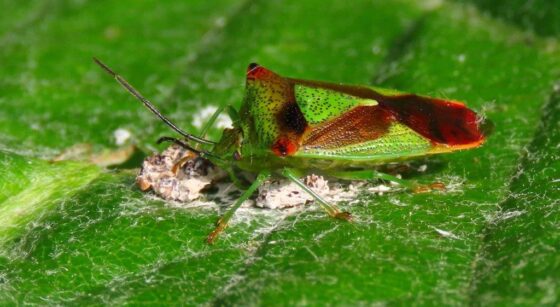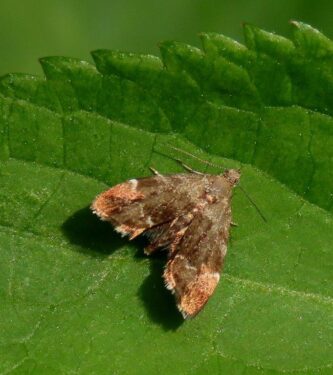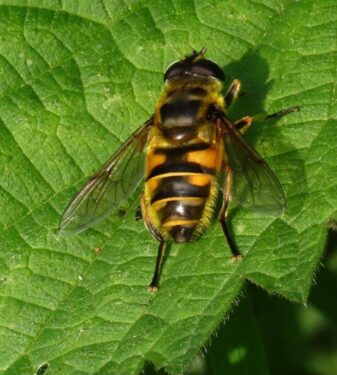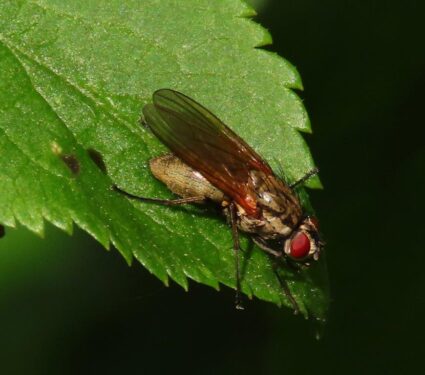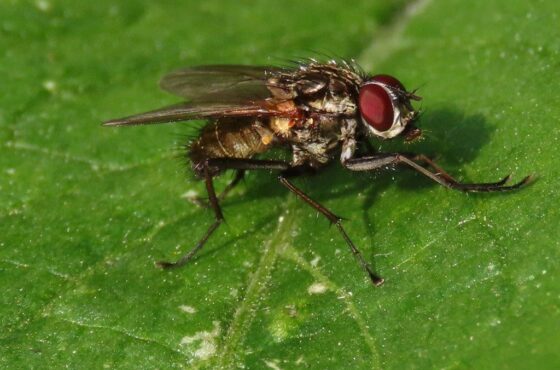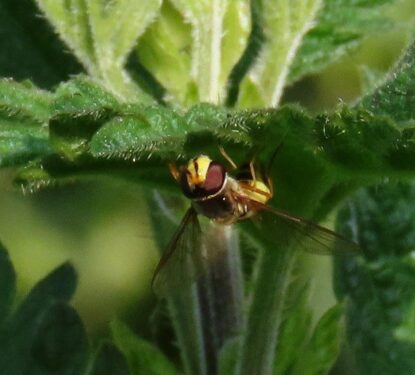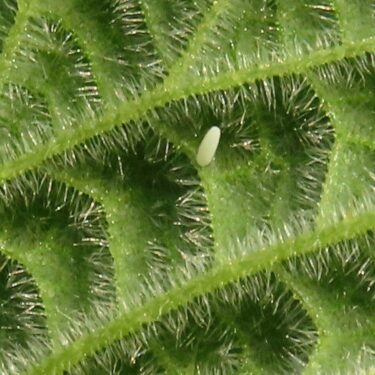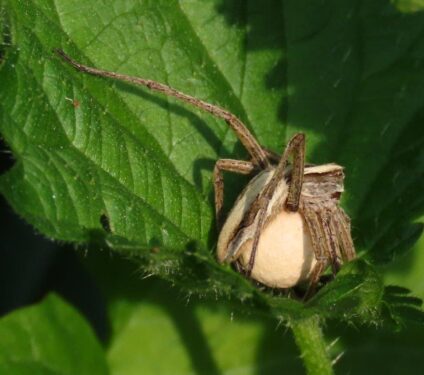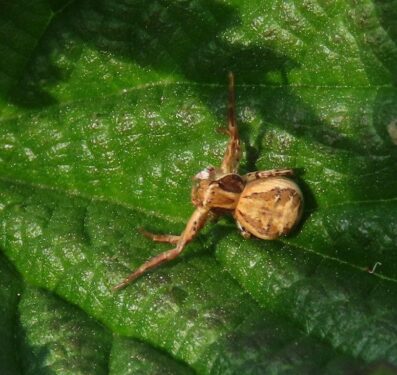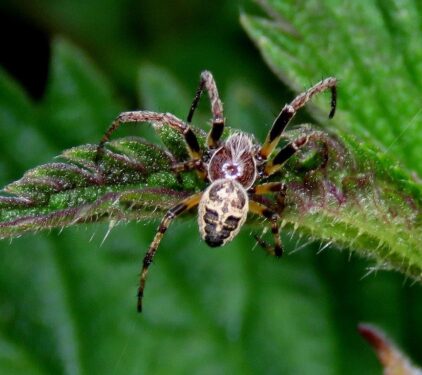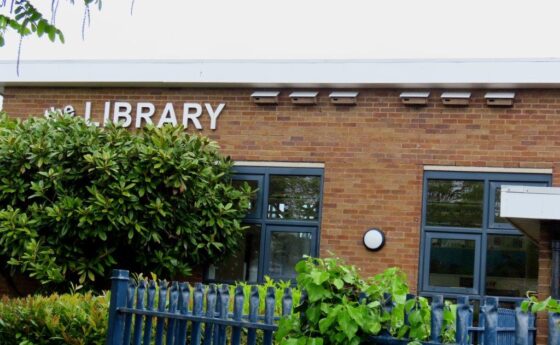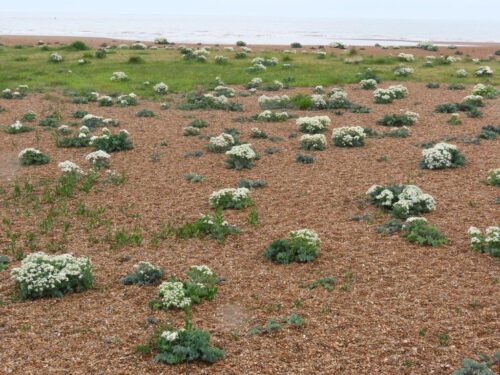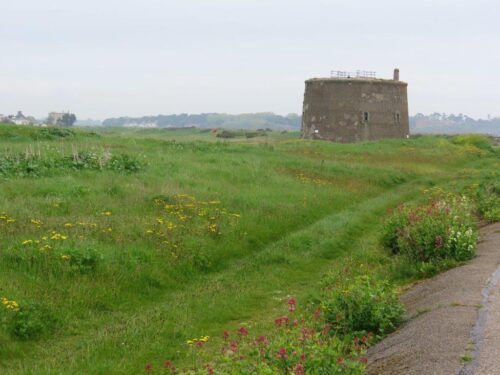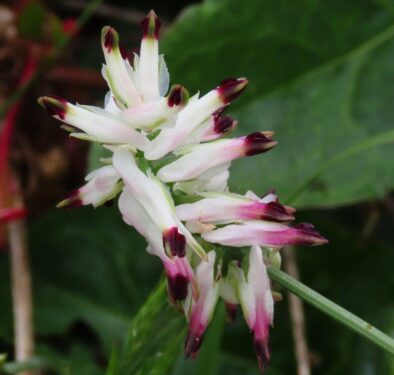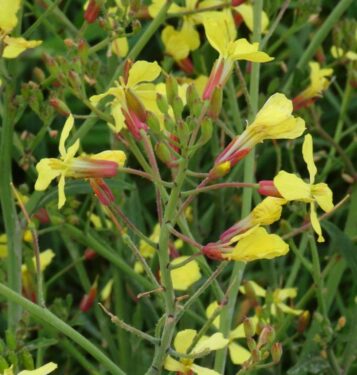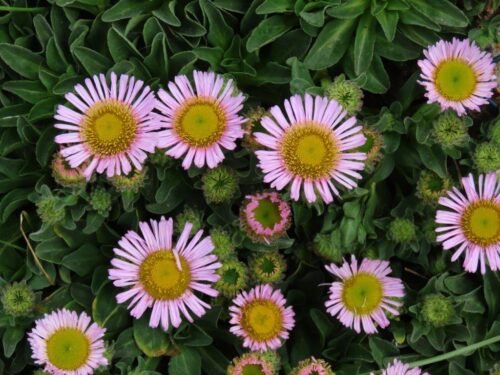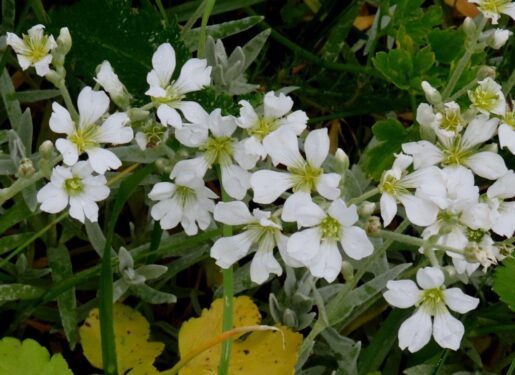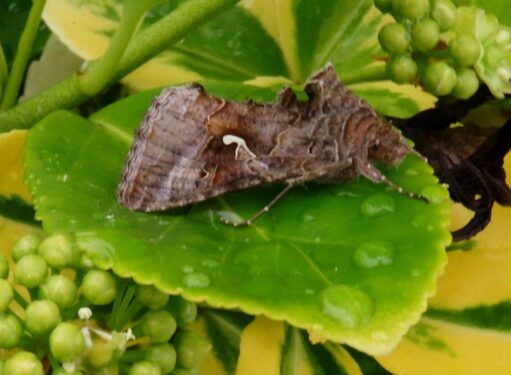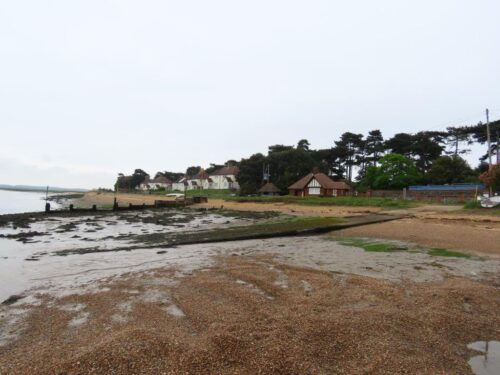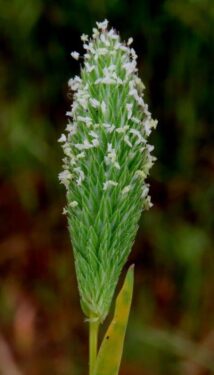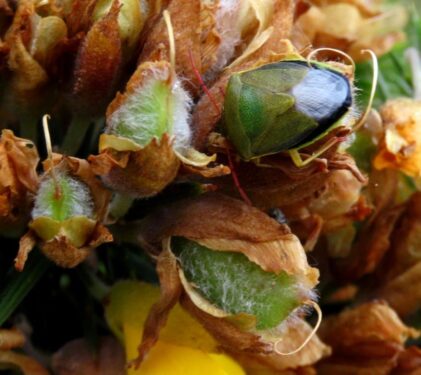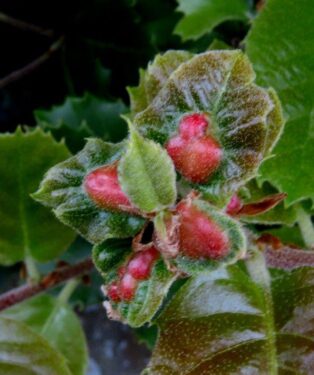A short break in Felixstowe was ostensibly a recce for our proposed #WildEssexOnTour extravaganza later in the summer, but in reality was jolly good fun as well! We didn’t venture to Landguard this time as we know it so well anyway, but we explored green spaces in the town and also up the coast to Bawdsey.
The first day, spent in glorious warm sunshine, we started along the sea-front, looking at the cliff gardens; they were a revelation, formal yet informal, filled with a wide variety of trees, shrubs and flowering perennials.
The plants are mostly non-native and tolerant of sea-spray and wind: fortunately most, like the sun-roses, are a magnet for bees and other pollinators.
Others included Rose Garlic, with mixed heads of flowers and bulbils, and Red Valerian, much more familiar but in full bloom, showing its almost unique character of possessing only one stamen per flower.
A number of springs emanate from the cliffs, reflecting the local gravel/clay geology, and these have mostly been corralled into formal water-features, fringed with Monkey-flower, and with Curled Pondweed and Water-hornwort in the water.
With such an array of plants and habitats not surprisingly there was plenty of insect life on display, from Holly Blues to tiny Dark Bush-cricket nymphs and Green-palped Sun-spider (with a planthopper for lunch) to numerous nymphal froghoppers drooling ‘cuckoo-spit’.
Even flat, mown lawns were not devoid of interest, some with both Sea and Small Mouse-ears (four and five petals respectively) among the Bulbous Meadow-grass, along with Bird’s-foot Clover (with at most two flowers in a head) and Spotted Medick, all typical components of dwarfed maritime turf.
Heading inland, the Snow Hill Garden had Elm leaves with the distinctive larval munchings and meanderings of the Zig-zag Elm Sawfly, a relatively new arrival in these parts…
… while in Langer Park, a more-traditional manicured recreational space around the remnants of the once-tidal Walton Channel, the trees and nettlebeds produced a huge late-afternoon array of sun-basking invertebrates.
There were ladybirds galore, including Adonis, Cream-spot and the distinctive sexpustulata form of Two-spotted …
… along with weevils, soldier-beetles and a large leaf-beetle with a distinctive ‘gutter’ around its thorax Chrysolina oricalcia, the latter something we have never seen before.
Other insects included Hawthorn Shield-bug, Nettle-tap moth and numerous flies …
… including one hoverfly who spent five minutes laying eggs on a nettle-leaf right in front of us, perhaps up to 20 in total!
Spiders too, including a nursing Nursery-web, a few crabbies and one Larinioides cornutus, with quiff and fancy garters. A truly splendid half an hour by the nettles.
Next morning, the weather could hardly have been more different: dull, grey, cooler and with light rain on-and-off all day. A real surprise then walking to hear a veritable chorus of Swifts flying over; yesterday there has been only a few. It went on – and on – and on – and it soon became apparent that it wasn’t ‘real’ Swifts, but tapes of screaming Swifts designed to drawn in occupants to the array of next-boxes on the Library. All credit to Suffolk County Council for this, even if elsewhere in the area they do appear to be a bit heavy-handed on the glyphosate front along paths and roads.
A bus-ride to the north-eastern end of town took us to within striking distance of Felixstowe Ferry. The shingle beach was covered in froth-topped flowering plants of Sea-kale, while along the edge of the land, there were all sorts of other interesting flowers, including White Ramping-fumitory, Seaside Daisy, Sea Radish and Snow-in-Summer.
Several Silver Y moths were out and about, presumably reflecting a recent immigration event, a nomad-bee (perhaps Nomada flava) nectared upon Sea-kale and several Gorse Shield-bugs gave the lie to their name, feeding (or at least resting and mating) on Sea Beet.
Rounding the corner to the Deben, we took the foot ferry across to Bawdsey …
… where we found flowering Barberry and Sand Cat’s-tail, with a Gorse Shield-bug in its ‘proper’ home bearing more than a passing resemblance to Gorse seed-pods.
And finally, one of our most exciting finds of all, the large, rounded, reddish galls of Plagiotrochus quercusilicis on the new-season leaves of Holm Oak. Caused by a gall-wasp, this again was new to us, and indeed is relatively new to the area, being first found in Colchester as recently as 2018. By now though it could be well established – certainly on our walk back to the station we saw it abundantly in one of the gardens.
A fascinating couple of days and a very enticing prospect for our three-day event later in the year!
